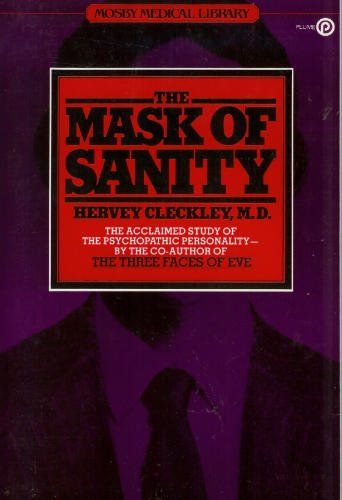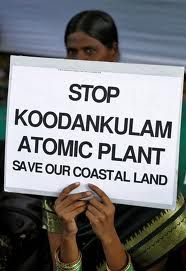
Publisher:
Bonnie King
CONTACT:
Newsroom@Salem-news.com
Advertising:
Adsales@Salem-news.com

~Truth~
~Justice~
~Peace~
TJP
Feb-25-2012 04:27

 TweetFollow @OregonNews
TweetFollow @OregonNews
Manmohan Singh's 'Thinking Segment' May Put Millions More at Risk
Arun Shrivastava Salem-News.comPrime Minister Manmohan Singh’s ‘mask of sanity’ dropped a few days ago for making two wild, senseless, and patently unscientific assertions
 Prime Minister Manmohan Singh - photo courtesy: dnaindia.com |
(CHENNAI, India) - An American psychologist Dr. Harvey Cleckley, professor of Clinical Psychiatry at Medical College of Georgia, wrote ‘The Mask of Sanity’ published in 1941.
 |
In this book Dr. Cleckley talks of psychopathic personalities, humans that are without conscience; outwardly they don’t differ from ordinary men and women, but a recent article says that a brain scan can reveal psychopathic personality.
Today, we are confronted with men and women who decimate societies: they are not psychopaths who kill a few individuals; they are sociopaths who kill entire societies.
Prime Minister Manmohan Singh’s ‘mask of sanity’ dropped a few days ago1 for making two wild, senseless, and patently unscientific assertions that:
- “[I]n due course of time we must make use of genetic engineering technologies to increase the productivity of our agriculture” and
- “Yes, where India is concerned, yes. The thinking segment of our population certainly is supportive of nuclear energy.”
 |

Manmohan Singh should note that opposition to agriculture biotechnology and nuclear power plant is rooted in scientific evidences.
Introduced to commercial farmers in the USA in 1993, more than a decade of peer reviewed scientific studies conducted by independent researchers exposing the spurious claims of agriculture biotechnology multinational corporations are in the public domain. It is now conclusively proven that genetic engineering of seeds and food crops destroy human and environmental health and I shall deal with this issue in a separate article.
And ever since the first commercial nuclear power plant went operational in Obininsk [1954, Russia], experts in the nuclear industry who designed, built and operated the nuclear reactors and studied their limitations are still grappling with the dangers posed by this failed technology. Worldwide, the cumulative operating experience with 435 reactors to February 2012 is 14,745 years against India’s 332 years.
The truth about nuclear power plant
Industry experts2 reject nuclear power on chiefly eight grounds:
- The risks arising from severe accidents on the scale of Three Mile Island [1979], Chernobyl accident [1986] and Fukushima [2011]: although the probabilities of an accident vary from one reactor to the other, accidents on the scale of Chernobyl or Fukushima could occur in all commercial reactor designs;
- The nuclear waste problem, which has not been solved so far in any country;
- The huge demands on water resources running into 90-124 billion gallons per day; the contaminated water is periodically drained into water bodies contaminating the food chain and aquatic life;
- Low-level of continuous radiation exposure to all living forms up to 250 kilometer radius of any nuclear plant, especially downwind;
- Significant long-term health, environmental, and safety problems associated with spent fuel or highly radioactive level waste disposal continue to bedevil nuclear power and make its future uncertain. It is not revealed to the people that official assessments of the risk of harm from exposure to radiation are on the rise worldwide;
- The unpredictable and high costs and financial risks of constructing, operating and maintaining a nuclear power plant; until now not one NPP has been completed within time and cost budget anywhere in the world;
- The inestimable costs of safe disposal and decommissioning;
- The insurance problem: the damage from severe accidents has always been officially assessed as so severe that the nuclear industry continues to rely essentially completely on government-provided insurance. The best test of this is to get insurance from any public or private insurance company against radiation hazard.
 |
One wit summarized the anomaly of nuclear power succinctly saying that more than sixty years after proclaiming “too cheap to meter” electricity, the industry is still turning to the government for loan guarantees and survival. The main proponent of ‘too-cheap-to-meter’ Lewis Strauss, in one of the most unethical acts expunged the Government report that warned of extreme dangers from locating a nuclear power plant near a major city.
Risk assessment
In ‘Consequences of Reactor Accident (CRAC-2)’ Report, published 1982, the US Government made an assessment of early fatalities, injuries, cancers and property damage around 129 units of operational nuclear power plant [NPP]. According to my calculation based on CRAC-2 data, the mean peak early fatality from any unit could be over 30,000, mean peak injuries could run into over 106,000 and mean peak deaths from cancers could run into over 24,000. In terms of property damage the estimate shows from a low of US$16 billion [from La Cross, Unit-1] to a high of US$215 billion [from Limerick, Unit-1]. The CRAC-2 report can be faulted on many points [see note #4 below] but at least an attempt was made following Three Lime Island accident of 1979 and this was prior to the Chernobyl in 1986.
Manmohan Singh says that ‘thinking segment of our population certainly is supportive of nuclear energy.’ The people of India have a right to know: (a) Has the Government of India sponsored any study to estimate injuries, fatalities, cancer deaths, property damage, loss of livelihoods and farmlands, and the area that may have to be evacuated in the event of an accident? If so, where is the report? And (b) who are these ‘thinking sections of our population certainly supportive of the nuclear energy?’ Could Manmohan Singh name 100 or 20, or even 5?
Does the Prime Minister know that right up to the perimeter wall of NPPs, people live in villages and are engaged in farming? Every reactor leaks radiation because they are designed in such a way that leaks can’t be stopped. Has the Indian Government ever conducted a study in the vicinity of NPPs to find out the health impacts on fetus, pregnant women, growing children, adults and the elderly? To my knowledge, only one health study has been done which I refer to below.
 |
Assessment of health risks
A nuclear accident is unlike any other accident. Radiation can’t be seen, heard, tasted or smelt; once released, it damages every life form below and above soil and in the atmosphere.
- The findings of a recent report on Chernobyl-caused one million deaths strongly suggest that a major accident can’t be contained to minimize fatality or serious debility. Contrary to the UN report that not more than 4000 people died. the report shows that perhaps one million people died in Russia, Europe and Asia over two decades;5
- Researchers in UK, France and Germany report of leukemia clusters around nuclear re-processing and NPP;
- In the only report on health effects in the vicinity of an NPP, researchers found significantly higher than normal incidences of weakness, general debility, digestive problems, skin diseases, solid tumors, eye problems, acquired deformities, still born babies with or without deformities, miscarriages and premature deaths as compared to distant villages.6
Since 1950s, the US Government agriculture experts have also conducted a series of studies to measure radionuclide uptake by plants and found significantly higher uptake.
The problem with Government sponsored studies is that when one researcher finds adverse impacts, others are brought-in to refute truthful findings. At international level a similar nexus between UN agencies has been observed. World Health Organization [WHO] has consistently expunged serious studies by its own scientists and it is now known that they conspired with International Atomic Energy Agency [IAEA] not to discuss the seriousness of health impacts of nuclear radiation.
Risk of accident in India
The Indian Government operates 20 nuclear reactors at seven locations in India; the contentious Koodankulum has yet to go critical. These are located in northern, western and southern parts of India in an arc of nuclear apocalypse. The reactors operate under ‘OFFICIAL SECRETS ACT,’ colonial India's anti-espionage act to protect and preserve British annexation of India, that states that one cannot approach, inspect, or even pass over a prohibited government site or area. The nuclear reactors operate on prohibited government area and hence common citizens are barred from entering, inspecting or even asking the forecourt attendant simple questions.
India is 1/3 the size of the USA with three times as many people; nine times as densely populated as the USA. These reactors are all located close to densely populated urban regions and close to natural water bodies like rivers, lakes, and oceans.
Let us assume the worst case scenario that one of these stations with their cluster of encased bombs blows up a la Fukushima. Note that the Japanese Government has behaved in the most criminal manner by withholding information from its people since March 2011. They knew the consequences and had prepared an evacuation plan for Tokyo last year. Now, Tokyo is about 206 kilometers from Fukushima.
Narora nuclear power plant is 93 kilometers east of Delhi; Tarapur and Madras stations are close to Bombay and Chennai, respectively. Kaiga is 94 kilometers south of Goa.
In case of a major accident in any of the stations, 75 to 120 million people will have to be evacuated. [Table 1] Over half a billion are endangered living on borrowed time.
| Table 1 Nuclear power stations | Major population clusters within 250 km radius | |
| 1 | Narora | Delhi |
| 2 | Rajasthan | Kota and Udaipur |
| 3 | Tarapur | Mumbai, Pune |
| 4 | Kakrapar | Surat |
| 5 | Kalpakkam | Kancheepuram |
| 6 | Madras | Chennai |
| 7 | Kaiga | Goa |
| Estimated population exposed to low level radiation | 550-825 million | |
 |
Data from Chernobyl and Fukushima suggests that vast swathe of lands will remain uninhabitable for at least 600 years. Pripyat city remains highly radioactive today, no one can live there. Where the millions living in Delhi, Bombay or Chennai would be relocated? Can India afford the cost of relocation 75-120 million citizens when it can’t house 93 million urban slum dwellers or even provide basic housing to the 800 million rural poor?
We know that no reactor is safe and they all leak low level radiation. Most vulnerable are people downwind of the reactors. But we in India have both easterly and westerly, strong surface winds. So people all around are continuously exposed to low dosing of radiation. Is it causing the massive growth in abortions, pre-mature births, birth defects and an explosive growth in diabetes and cancers among the adults? Or, is the low dosing making us healthier as claimed by post-Fuku Japanese Government shills and Indian and American perps? The people will soon know and then rat holes will be in short supply.
A full and thorough review of existing scientific data would probably run into several hundred pages. However, the references I have presented here should be a good starting point for anyone seriously interested in probing the falsehood around nuclear power plants. Perhaps both Manmohan Singh and his “thinking segment” should submit to a thorough brain scan.
___________________________________
 Arun Shrivastava is Salem-News.com's South Asia Correspondent. An accredited management consultant, Arun is also a highly experienced researcher and writer. He studied in India and England and returned to India in 1989, after a brief stint as senior officer with Economic Development Unit of Birmingham (UK). From 1989 to 1994, he taught Strategic Management and Long Range Planning to MBA students at International Management Institute in Delhi.
Arun Shrivastava is Salem-News.com's South Asia Correspondent. An accredited management consultant, Arun is also a highly experienced researcher and writer. He studied in India and England and returned to India in 1989, after a brief stint as senior officer with Economic Development Unit of Birmingham (UK). From 1989 to 1994, he taught Strategic Management and Long Range Planning to MBA students at International Management Institute in Delhi.
About twenty years ago he founded two institutions, one for consulting and another for doing sponsored research work; today both are known for excellence. Since the events of 9/11, he has devoted much of his time to researching NWO issues. Arun also moderates International Human Rights Organizations’ discussion group.
Salem-News.com is very pleased that Arun Shrivastava chose to join our dynamic team which has been paying increasing attention to problems taking place in India. He is Salem-News.com's 94th writer and his presence allows us to better cover important events in an increasingly interconnected world community.
You can send an email to Arun Shrivastava at this address: arunshrivastava.1951@gmail.com
 |
Articles for February 24, 2012 | Articles for February 25, 2012 | Articles for February 26, 2012



Salem-News.com:


Terms of Service | Privacy Policy
All comments and messages are approved by people and self promotional links or unacceptable comments are denied.
stephen February 25, 2012 2:02 pm (Pacific time)
My hope and prayer is that Salem-news will focus more on who is causing the problems, rather than just showing us the problems...maybe someday, I have faith in Tim King.
Anonymous February 25, 2012 11:32 am (Pacific time)
No wonder "salem-news" would publish this kind of rubbish that is...
Editor: There is no need to publish your pro-government rant, don't insult our writers and maybe your words will show.
[Return to Top]©2025 Salem-News.com. All opinions expressed in this article are those of the author and do not necessarily reflect those of Salem-News.com.